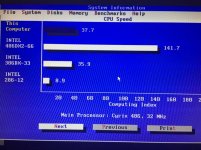willmurray461
Experienced Member
I was just thinking about buying a 386 to 486 upgrade for one of my machines, and realized that it would be really nice if there were modern-day accelerator boards for the PC (8088, 286, 386, etc.). Tons exist for the Commodore Amiga, and now one exists for the Apple II, but none for the PC. I find it strange, given that the PC is the most successful platform of them all. I understand that the difference between the PC and the Amiga, for example, is that you can easily and affordably buy a much more powerful PC to replace your old one, but powerful Amiga's are much harder to find and much more expensive. However, is it incorrect to assume that there is still a large market which would be interested in early x86 processor upgrades?




